I’m torn on this one.
On the one hand, I understand the indiscriminate hunger of deer and the damage they can do to a landscape, or your carefully tended garden. In a single night, they can ravage months of work in the vegetable beds.
Other times, they can do so much cosmetic damage to a landscape that repairing it is a costly and frustrating experience, if repair is even possible.
But, on the other hand, I really like deer.
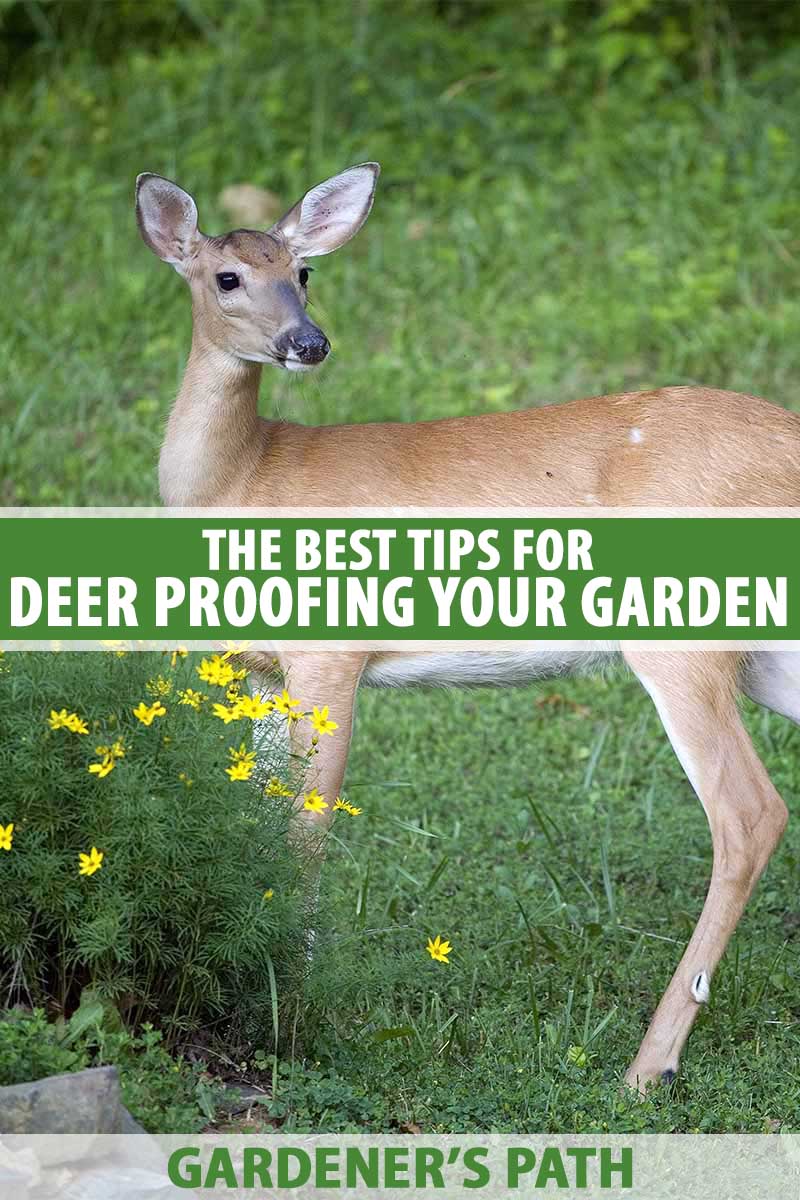
We link to vendors to help you find relevant products. If you buy from one of our links, we may earn a commission.
They’re beautiful animals. Stumbling upon and startling a doe in the wild is an exhilarating moment; she takes off like lightning and bounds effortlessly through undergrowth and treelines alike. I’ve even seen a doe clear a two-lane road in a single bound.
These are stunning creatures. Stunning creatures, that is, with an insatiable appetite and utter disdain for boundaries.
I’m admittedly soft-hearted when it comes to almost any animal, bird, or bug. I shake my head and say, “Those dang deer… But I guess they’re hungry, I can’t blame ‘em,” every time I spot damage.
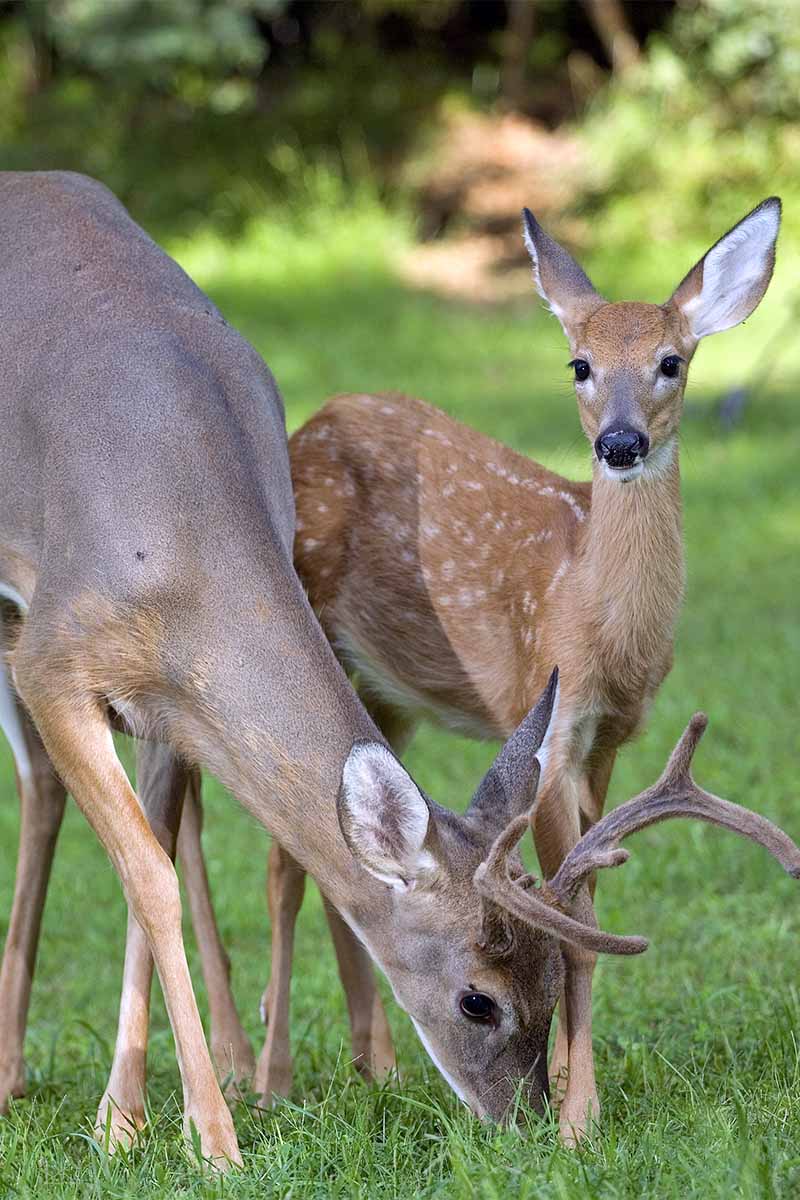
Call me an enabler, but I don’t really mind deer doing their thing.
Of course, not everybody feels that way. For most folks, deer are an intolerable nuisance and the bane of a gardener’s existence.
I understand this, and have worked for enough clients who disdain deer and want them banned from their properties to know how to achieve this end.
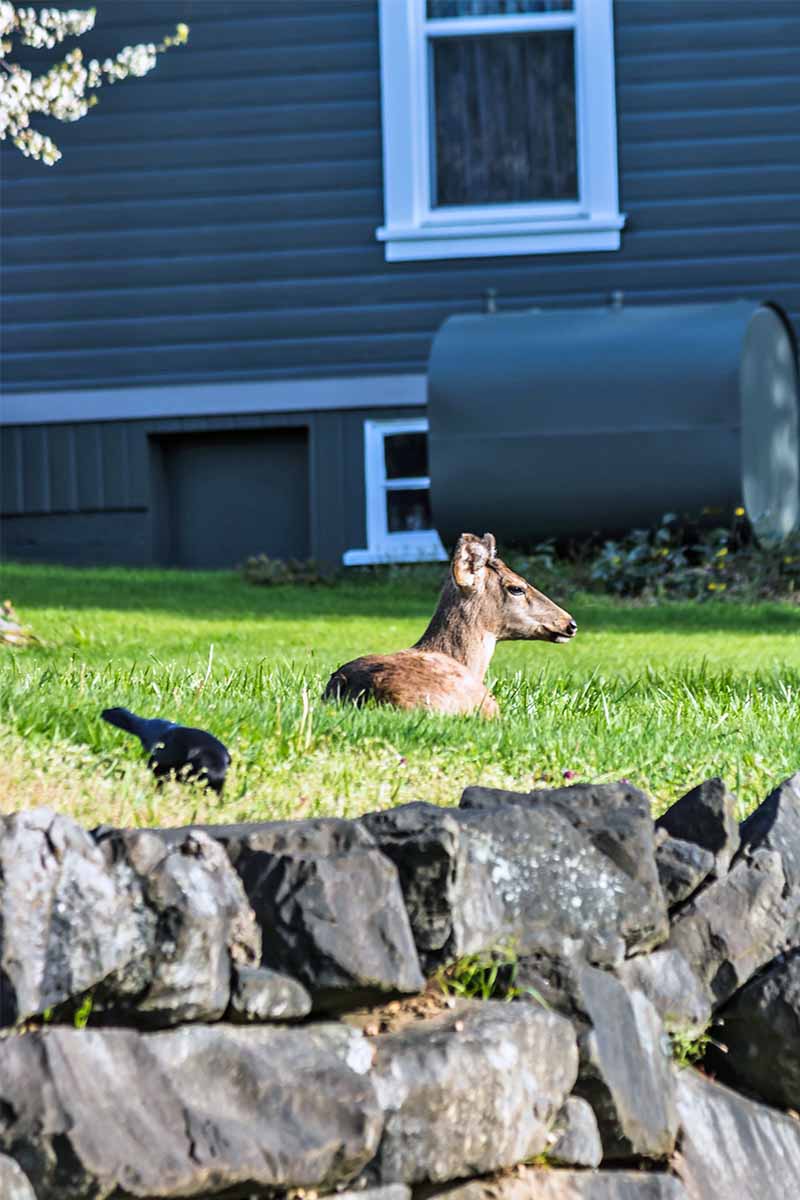
Going forward, let’s remember a key facet of gardening that applies doubly to deer duty:
An ounce of prevention is worth a pound of cure.
Here’s what’s to come in this article:
Deer-Proof Your Garden with These Tips
Keep reading to find out how you can deter this particular variety of local wildlife from your yard and garden, or at least minimize their damage.
Keep Them Away
Before we jump into our list of plants that these animals tend to pass over, let’s look at how to keep them out of our gardens and properties in the first place.
Somethin’ Smells Funky
Deer have a strong sense of smell, so a common suggestion for preventing their appearance is to spread stinky stuff around your property, or near the plants you are trying to keep these ungulates away from.
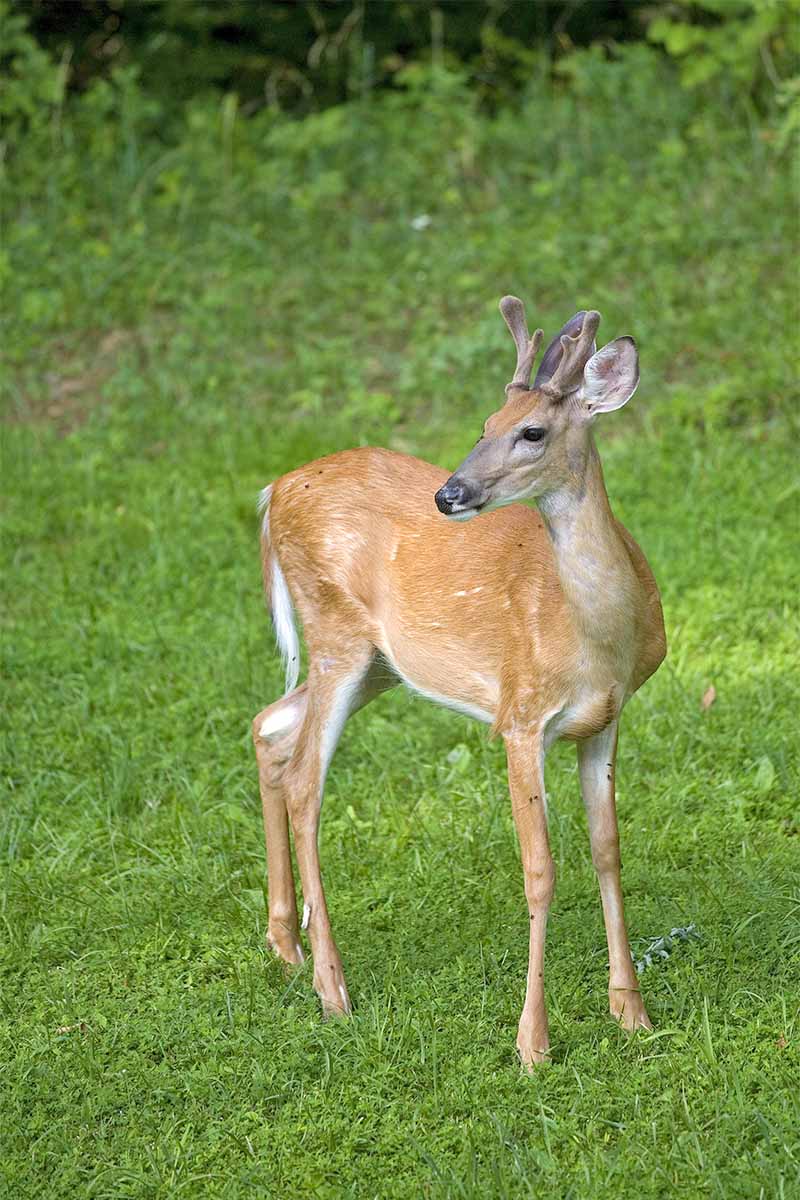
I’ve known relatives to use everything from powdered garlic and onion and cayenne pepper to human hair to bottom-shelf perfumes. These natural and inexpensive chemical repellents are met with varying levels of success.
Liquid Fence Repellent Concentrate
If you want to use a stinky solution to deter the local wildlife, I recommend that you consider products intended for this purpose. The strong-smelling deterrents are sometimes vile to our own senses (in the case of products like Liquid Fence, available at Tractor Supply) and sometimes not half bad (such as Messina’s Deer Stopper, available at Amazon and Tractor Supply).
In my experience, the ones that don’t smell as bad to us are typically the most effective. They are usually sourced from natural rosemary and garlic extracts instead of rancid eggs, so they’re more pleasant to apply, too.
Messina’s Deer Stopper via Tractor Supply
Unfortunately, our hungry frenemies tend to grow accustomed to regular scents, and as time goes by, an often-applied deterrent becomes tolerable to their noses.

Deer Out Concentrate available at Amazon
I’ve had excellent luck with products like Scram (available via Home Depot), rotated with a liquid repellant such as Deer Out.
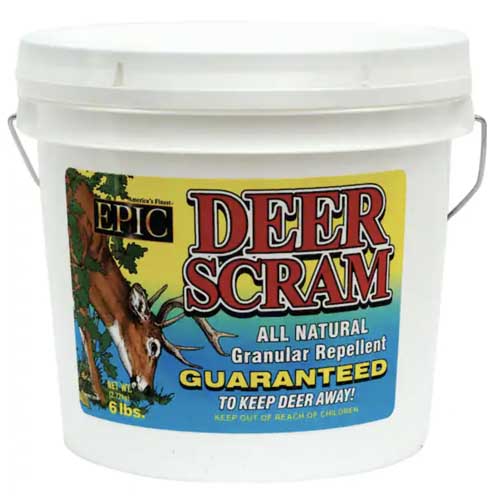
The solution isn’t to apply more of the same, but to rotate products and keep the local critters on their toes – err, hooves.
This can be followed with application of a stronger formula like Professional Deer Scram.

This product literally smells like death to deer but isn’t detectable by most humans. It’s made with natural ingredients and is safe around pets and small children. You can purchase it through Amazon.
Afterwards, start the application cycle over again.
Another solution is to use a system such as the above mentioned Messina product. Their original Deer Stopper is made with a combination of spices that includes clove oil as the primary scent. Their Deer Stopper II replaces the clove oil with cinnamon; which provides enough different of a scent to confuse and deter our four legged friends.
Spray the Pests Away
My favorite solution for keeping ungulates and other wild pests away is tied to a fancy piece of motion-sensing technology.
A motion-activated sprinkler is probably the most effective control method I’ve ever used. I employ these in the gardens of many of my clients, and find the results to be utterly satisfying.
All it requires is a sturdy, leak-proof hose bib and a great motion-activated sprinkler attachment.

Orbit Yard Enforcer Motion-Activated Sprinkler
I’ve used Orbit’s Yard Enforcer most frequently, which is available from Amazon, and includes night and day sensors.
Installation is simple:
- Attach the sprinkler to a piece of rebar or similarly sturdy base.
- Angle the motion sensor towards where you want the sprinkler head to spray.
- Adjust sensitivity levels and spray duration.
And you’re done!
The only drawbacks to this solution are that you need to have enough hose length to meet the needs of your property, and you need to keep the hose bib turned on. That’s why durable, high-quality bibs and hoses need to be used to eliminate water waste.
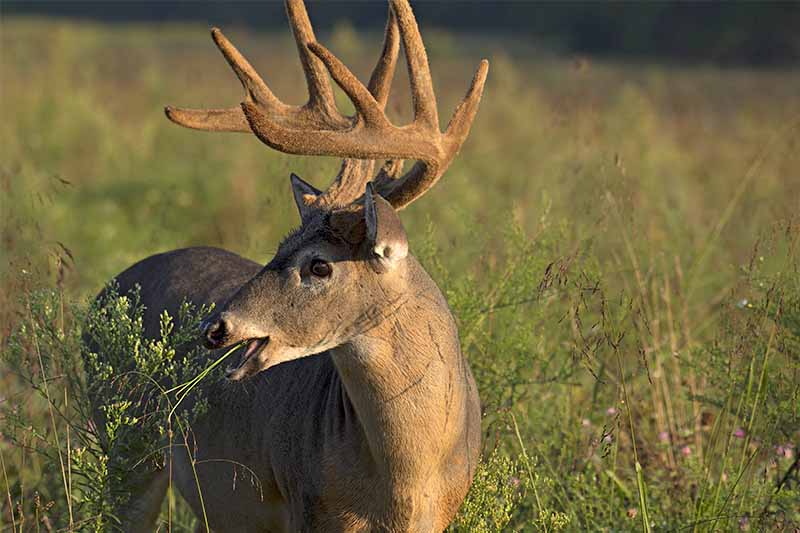
In my experience, there’s no better deterrant than these sprinkler heads.
At their best when protecting your vegetable garden, they can also be effective when employed as spritzing sentries at any openings in your fence line.
Don’t have access to a water hose in the location(s) you want to protect? No problem. I find that ultrasonic repellers work fairly well.

Aspectek Yard Sentinel Ultrasonic Animal Repeller
My go to for this is the Apsectek Yard Sentinel which is also available via Amazon, with or without a strobe light.
It also requires no access to an electrical outlet as it’s can either be powered by the included 33-foot cord or use four C batteries, making it ideal for really remote locations too.
Stay Out of My Yard!
More permanent, structural solutions are also available. And in this case, the most expensive solution is also the most effective.
Here it is:
Simply wall off your property by installing a deer fence.

This method is a relatively arduous undertaking, but the results are proven and effective. The only hangup is that now you’ve got a large fence around your property.
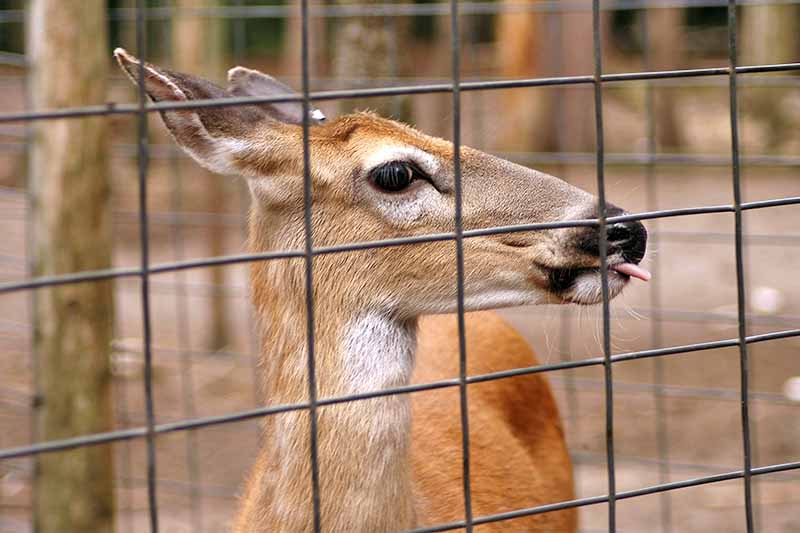
For some folks, that’s just fine. But for others, the aesthetic drawbacks of this netting are a deal-breaker when weighed against the potential benefits.
This project can easily become a very expensive endeavor, but nothing else is as effective. For detailed instructions to set up your own, see our DIY tutorial.
Remove Their Preferred Menu Items
Another method for preventing deer from using your yard as anything more than a highway to more desirable locations is to avoid planting what they want to eat.
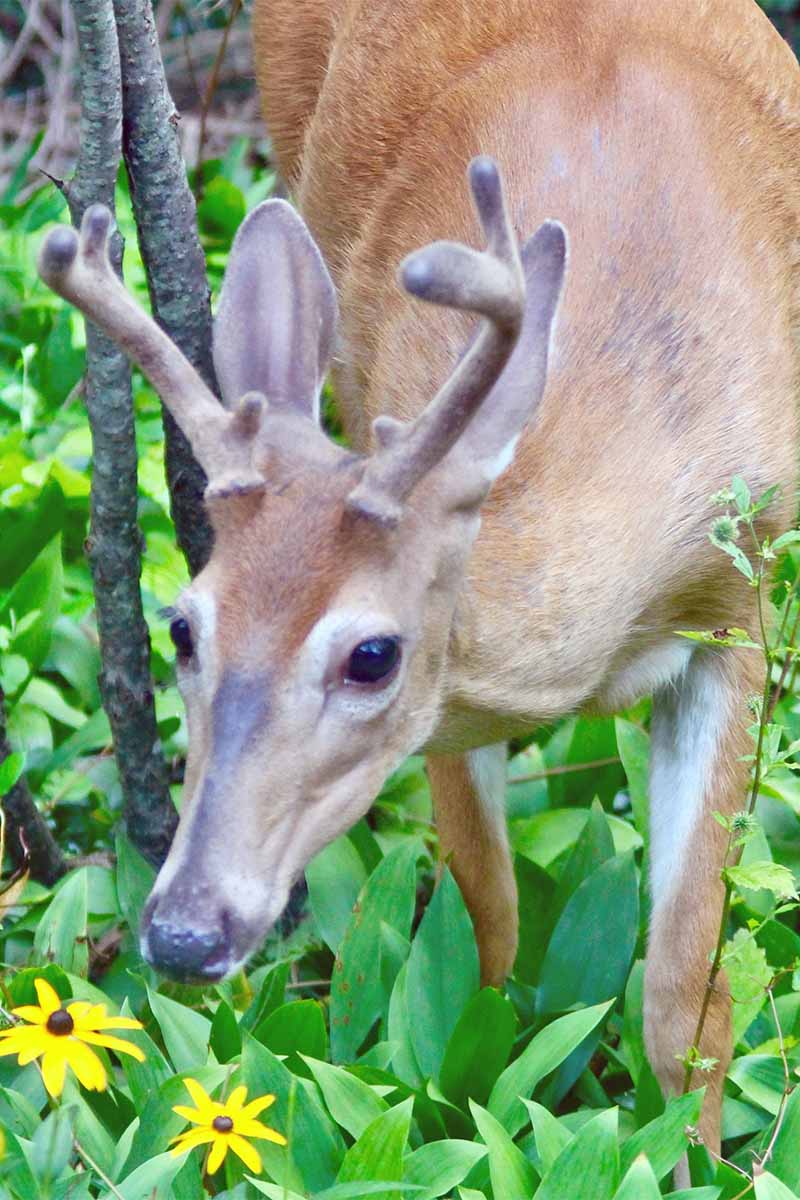
Our feature on deer-proof trees is a good place to start, but a variety of perennials and other plantings are excellent choices as well.
Trustworthy Perennials, Annuals, and Bulbs
It’s worth repeating that nothing is truly deer proof, but rather, most plants are merely resistant.
The following is a handy list of a variety of herbaceous plants that are resistant to our four-legged ungulate friends. Follow the links for handy guides that will teach you how to grow them in your garden space.
- Allium
- Astilbe
- Balloon Flower
- Begonia
- Black-Eyed Susan (mature growth only – young growth is nibble-able)
- Coreopsis
- Daffodil
- Dahlia
- Iris
- Lily of the Valley
- Marigold
- Petunia
Deerly Departed
The deer aren’t going anywhere, that’s for sure. The more cities and suburbs grow, the fewer natural resources are available for them to eat. This makes our gardens and yards a convenient source for an all-you-can-eat buffet.
I think it’s a fair trade, but for those who really don’t want deer messing up their yards or contributing to the spread of Lyme disease, some well-utilized deterrents are an easy solution.
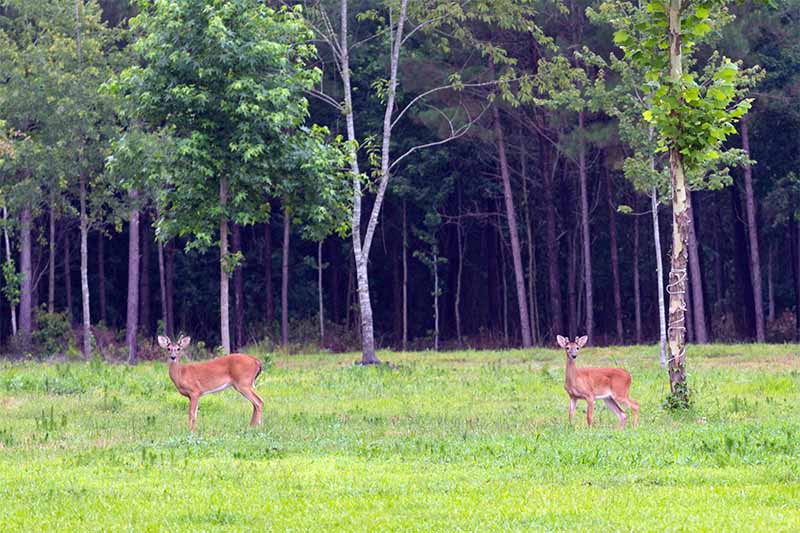
For a more permanent solution, planting resistant trees or installing appropriate fencing is an even better way of minimizing the damage they like to do to our handiwork.
If you’ve got trouble with other critters like rabbits in your yard, check out our how-tos on keeping them away. Or if large mammals are giving you grief, some of these topics may be of help:
- DIY Guide: How to Install a Deer Fence to Keep Wildlife Out of the Garden
- Dear Deer, Leave My Trees Alone
- How to Keep Moose Out of Your Garden and Orchard
And if you have a comment, question, or suggestion, we’re always happy to receive them in the comments section below. Thanks for reading!

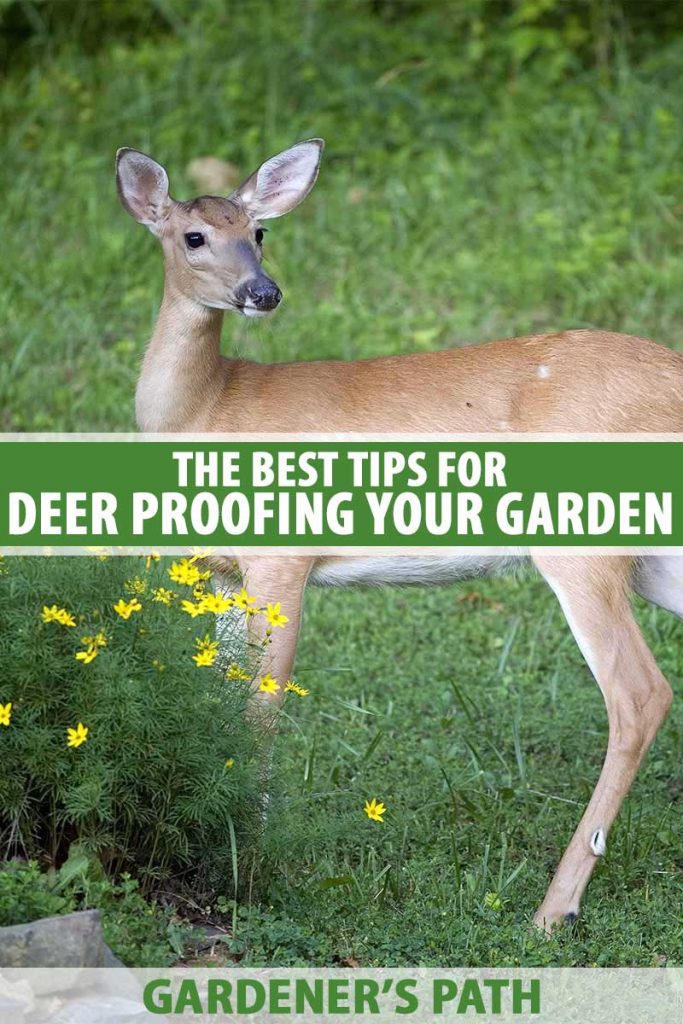
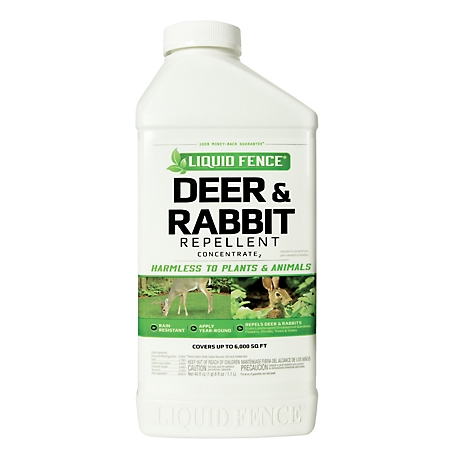

What I love about the idea of getting your property deer fenced because there is nothing more effective in keeping deer out but with a properly built perimeter fence on your property. Grandpa would have to get one installed around his farmhouse to keep his herb and vegetable gardens safe from these graceful wanderers. I’d nice too if he could surround his vegetable patch with flowering bushes to hide them and the fence for a more beautiful deer fence.
Nothing like a solid barrier to actually protect your garden and the fruit of your labor. I’m a fan of using whatever soft deterrents we can, but in the end a physical barrier is king.
I love the idea of growing flowering shrubs around the fence, especially something like azalea that generally deter deer. Great thought!
Thanks for reading, Angel, I appreciate you taking the time to reach out and comment!
For about 5 years now I’ve been using Messina’s Deer Stopper. It’s a concentrate I mix in a milk jug, and in the mornings walk around with coffee, squirting new foliage. I have an extensive Japanese Maple, Hosta and Heuchera collection. And, a 16 deer (at last count) herd in my field. I have areas where invasive plants are sheered to the ground, but the hosta and desirable plants right next to them remain untouched. Not to be confused with Deer Stop, Messina’s product continues to get rave reviews from me. My garden investments are substantial. This product, although not… Read more »
Thanks for the suggestion, I’ll have to give the product a shot for myself!